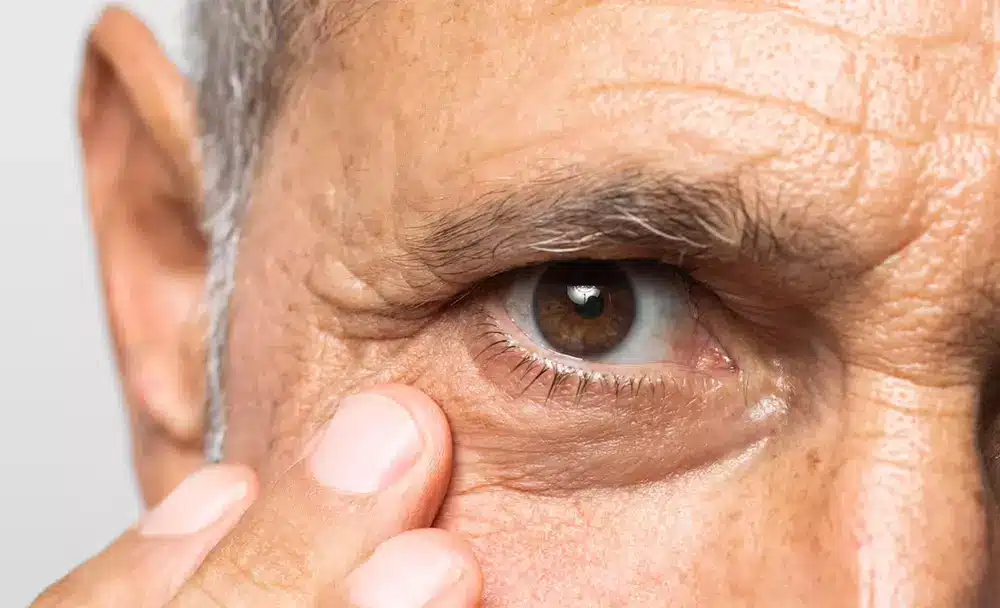This article is reviewed by Dr. Jyoti Lakhani

Are you suffering from cataracts?
Cataracts are a common eye condition that affects many people as they age. Find out more about cataracts and their treatment in this article.
What Are Cataracts (1)?
Cataracts are cloudy regions that form in the lens of your eye. The lens is a clear part of the eye that helps to focus light on objects. Cataracts can make your vision blurry, hazy, or less colourful over time. You may even have trouble reading or doing other everyday activities. If left untreated, cataracts can also lead to vision loss.
Types of Cataracts (2)
There are different types of cataracts that can develop due to various factors, such as:
- Age-related cataracts developed naturally in the lens of your eye as you age
- Traumatic cataracts, caused by serious eye injuries
- Radiation cataracts developed as a result of radiation exposure from the sun or cancer treatment
- Paediatric cataracts developed in children due to genetics, problems occurred during pregnancy or childhood illnesses
- Secondary cataracts developed after cataract surgery due to the formation of scar tissue in the eye
Symptoms of Cataracts (3)
Cataracts often develop slowly, and many people may not even realise they have them until they begin to affect their vision.
Here are some of the most common symptoms of cataracts:
- Blurry vision
- Seeing double or a ghosted image out of the eye with a cataract
- Being extra sensitive to light (especially with oncoming headlights at night)
- Having trouble seeing well at night or needing more light when you read
- Seeing bright colours as faded or yellow instead
What Causes Cataracts (3)?
Ageing is the most common cause of cataracts. As we age, the proteins in the lens of the eye begin to break down, causing the lens to become cloudy.
However, there are also several other factors that can cause cataracts, such as:
- Family history of cataracts
- Medical problems such as diabetes
- Smoking
- Eye injury or surgery
- Radiation treatments on the upper body
- Prolonged exposure to UV rays without sunglasses
- Use of certain medications, such as steroids
These factors can also increase the risk of developing cataracts (1). Therefore, if you have any risk factors, speak to your doctor to learn more about preventive measures.

Diagnosis of Cataracts (3)
If you experience any symptoms of cataracts, it is important to visit an ophthalmologist for a comprehensive eye exam. During this exam, your ophthalmologist will perform several tests to diagnose cataracts, including:
- Dilation of the pupils to examine the back of the eye
- Slit-lamp exam to examine the front of the eye
- Retinal exam to examine the retina and optic nerve
- Refraction and visual acuity test to assess the sharpness and clarity of your vision
Treatment of Cataracts (3)
If your cataract symptoms are not bothering you very much, you may not need to remove them right away. However, if your cataracts are affecting your daily activities or quality of life, cataract surgery is the only effective treatment.
During cataract eye surgery, the cloudy lens is removed and replaced with an artificial lens. The procedure is safe and generally well-tolerated, and most people experience a significant improvement in their vision after surgery.
How To Prevent Cataracts (3)?
While cataracts cannot be prevented entirely, there are some steps you can take to reduce your risk of developing them. Here are some tips for cataract prevention:
- Have an eye exam every year if you’re older than 65 or every two years if younger.
- Wear sunglasses that block at least 99% UV and a hat to protect your eyes from UV light.
- Quit smoking if you smoke.
- Use brighter lights for reading and other activities, and consider using a magnifying glass if necessary.
- Limit driving at night if night vision, halos, or glare become problems.
- Manage existing health conditions, especially diabetes.
- Get the right eyeglasses or contact lenses to correct your vision.
The Ayurvedic Approach to Cataracts (4)
According to Ayurveda, cataract is known as Kaphaja Timira, a condition where the vitiated Kapha Dosha affects the Drusti Mandala (vision field) and can lead to complete loss of vision if left untreated.
Here is how Ayurveda approaches the treatment of Kaphaja Timira or cataract:
Nidana (Causative Factors)
Ayurveda identifies various factors that can contribute to eye diseases, including cataracts. These factors include taking a cold water bath when the body is hot, prolonged exposure to distant objects (e.g., excessive TV watching), sleep disturbances, continuous weeping, traumatic injury to the eyes, consumption of certain foods (e.g., sour and heavy foods), and observing minute objects for extended periods (e.g., excessive mobile phone use). Smoking is also one of the leading causes as it can vitiate Pitta and Vata doshas, leading to the aggravation of Timira.
Samprapti (Pathogenesis)
According to Ayurvedic understanding, the pathogenesis of cataract involves the vitiated Doshas accumulating in the first Patala (layer) of the eye, leading to initial blurred vision. As the Doshas further spread to the second and third Patalas, the vision deteriorates, resulting in symptoms like seeing overlapping objects, double or triple images, and changes in object size perception. If the Doshas reach the fourth Patala, it can lead to a complete loss of vision (Linganasha).
Prevention and Management
Ayurveda suggests several measures to maintain eye health and prevent the progression of cataracts. These include avoiding the causative factors mentioned earlier, adopting a balanced and nutritious diet, protecting the eyes from injury and excessive strain, maintaining proper sleep patterns, and minimising exposure to harmful factors like smoking and excessive radiation.
Ayurvedic Treatments
Ayurveda offers a range of therapies and treatments to manage cataracts and promote eye health, such as Panchakarma (detoxification procedures), Nasya (nasal administration of medicated oils), Tarpana (eye rejuvenation therapy), and various herbal formulations that help balance the doshas and nourish the eyes.
Disclaimer: Always consult with a qualified Ayurvedic practitioner before using any herbal formulation or therapy for cataracts.
The Final Takeaway
Cataracts are a common vision problem that can be easily diagnosed and treated. If you experience any symptoms of cataracts, it is important to visit an ophthalmologist for an exam. You can also consult an Ayurvedic practitioner to avail of Ayurvedic treatment for cataracts.
By taking steps to prevent cataracts and seeking treatment if necessary, you can maintain good vision and quality of life as you age.
FAQs (5)
- At what age do cataract symptoms typically appear?
Cataract symptoms usually become noticeable around the age of 60 or later, although the proteins in the eye’s lens start to break down around age 40. However, certain medical conditions like diabetes may cause symptoms to occur earlier.
- How common are cataracts globally?
According to the World Health Organization, approximately 17% of people worldwide suffer from cataracts. However, the prevalence of cataracts varies significantly across countries and regions. Middle-income and low-income nations tend to have a higher prevalence due to increased risk factors and limited access to cataract treatment.
- Do cataracts cause any discomfort?
Cataracts themselves do not typically cause pain. However, they can make your eyes more sensitive to light, leading to discomfort or sensitivity. If you experience any discomfort due to cataracts, it’s advisable to consult an eye care professional for evaluation and appropriate management.
- Is cataract surgery safe?
Cataract surgery is considered one of the safest and most frequently performed surgeries. Serious complications are rare, but it’s important to be aware of potential risks such as retinal detachment and infection. Discuss your individual risk factors with your healthcare provider before surgery, and inquire about how they can address any possible problems that may arise.
- What is the recovery time after cataract surgery?
After cataract surgery, mild pain and discomfort may be experienced, but your healthcare provider can provide pain relievers for the first day or two. Full recovery generally takes four to eight weeks, but improvements in vision can often be noticed sooner. Your provider will advise you on when it’s safe to resume your regular activities.
References
- https://www.nei.nih.gov/learn-about-eye-health/eye-conditions-and-diseases/cataracts
- https://www.nei.nih.gov/learn-about-eye-health/eye-conditions-and-diseases/cataracts/types-cataract
- https://www.aao.org/eye-health/diseases/what-are-cataracts
- http://www.iamj.in/prposts/2018/images/upload/1451_1457.pdf
- https://my.clevelandclinic.org/health/diseases/8589-cataracts-age-related

















